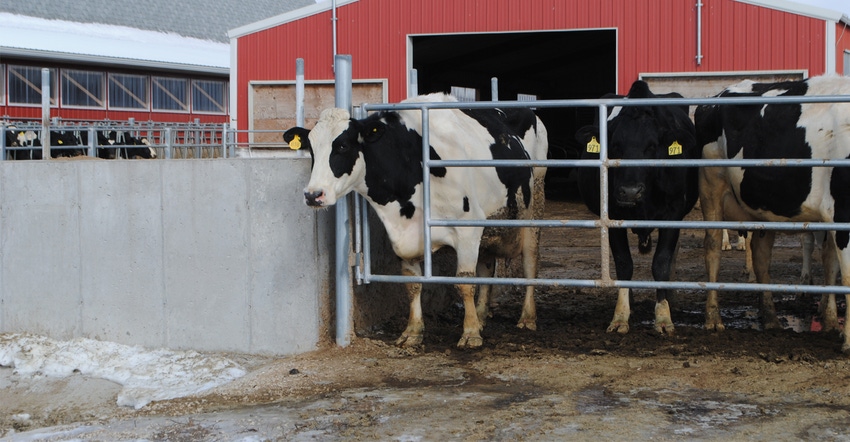
USDA estimates November milk production at 1% higher than the previous year. If December has a similar increase, the year will end up with 215.4 billion pounds of milk, 1.4% more than 2016. But 2016 was a leap year, and the leap-year-adjusted increase would be 1.7%.
“This is a lot of milk considering milk production increased 1.6% [leap year adjusted] in 2016,” says Bob Cropp, University of Wisconsin Extension dairy economist. “This strong milk production is putting downward pressure on milk prices.”
The Class III price was $16.88 in November, the high for the year, and fell to $15.45 in December. “This will make the average for the year about $16.20, compared to $14.87 in 2016,” Cropp says. “So while milk prices were not the greatest, 2017 was still a big improvement over 2016.”
But milk prices do not look good going into 2018, Cropp warns. “USDA is forecasting a relatively strong increase in milk production, at 1.7% higher,” he says. “Good domestic sales and higher dairy exports will be required to hold up milk prices. The economy is showing strength, the Consumer Confidence Index continues to improve, and the Restaurant Performance Index is showing some improvement — all positives for improved domestic sales. USDA is forecasting a rather modest growth in domestic sales. So a lot will depend on exports.”
As of now, however, an increase in exports will be a challenge. Milk production is increasing in all five of the major exporters — the European Union, New Zealand, the U.S., Argentina and Australia, Cropp says. So the U.S. will face stiff competition for markets in 2018. World prices have fallen, putting downward pressure on U.S. prices — especially nonfat dry milk and dry whey, which depend heavily upon international markets. World demand is expected to pick up as China and others appear to be increasing imports again, and this will help absorb some of the increase in milk production.
Low milk prices this winter
Cropp says right now, the Class III price looks to be in the $14s for the first half of the year.
“Current Class III futures has Class III in the $13s for February and March,” he notes, “but with milk prices that low, production may moderate the second half of the year. We can expect milk prices to improve for the second half of the year, with Class III in the $15s. If prices end up at these levels, Class III would average for the year about $1 lower than 2017, at $15.20.”
But Cropp says he would not rule out milk prices doing somewhat better than this for the second half of the year.
“Milk production could increase less than 1.7%,” he says. “World milk production also may not increase as much. For example, New Zealand is now experiencing a drought, and if rains don’t come soon, its growth in milk production will be reduced. World demand could also end up higher. It doesn’t take big changes to change milk prices.”
Higher production of dairy products has led to ample stocks. Compared to a year ago, October butter production was 2.6% higher, cheddar cheese 4.1% higher, total cheese 1.7% higher and nonfat dry milk 6.5% higher. Increased cheese production in 2017 increased dry whey production 8.2%. Butter stocks did decline 14% from September to October, and were 3.7% lower than a year ago, according to USDA. But with butter orders for strong seasonal sales now filled, butter prices have fallen. American cheese and total cheese stocks also declined from September to October by 5.3% and 3.1%, respectively.
When milk production increases well above 1%, strong domestic sales along with good dairy exports are required to hold up milk prices. The latest export data is for October. While nonfat dry milk/skim milk powder exports ran well above year-ago levels from the last half of 2016 through July 2017, they have fallen lower due to strong competition from both EU and Canadian exports. October exports were 34% lower than the previous year. The loss of exports has pushed nonfat dry milk prices to a historic low. Cheese exports have slowed, but in October were still 9% higher than a year ago. Butterfat exports were 13% higher and dry whey exports 9% higher. On a total milk solids-equivalent basis, October exports were still 15.2% of U.S. milk production and 14.3% year to date.
O’Leary is the editor of Wisconsin Agriculturist, a sister publication.
About the Author(s)
You May Also Like






